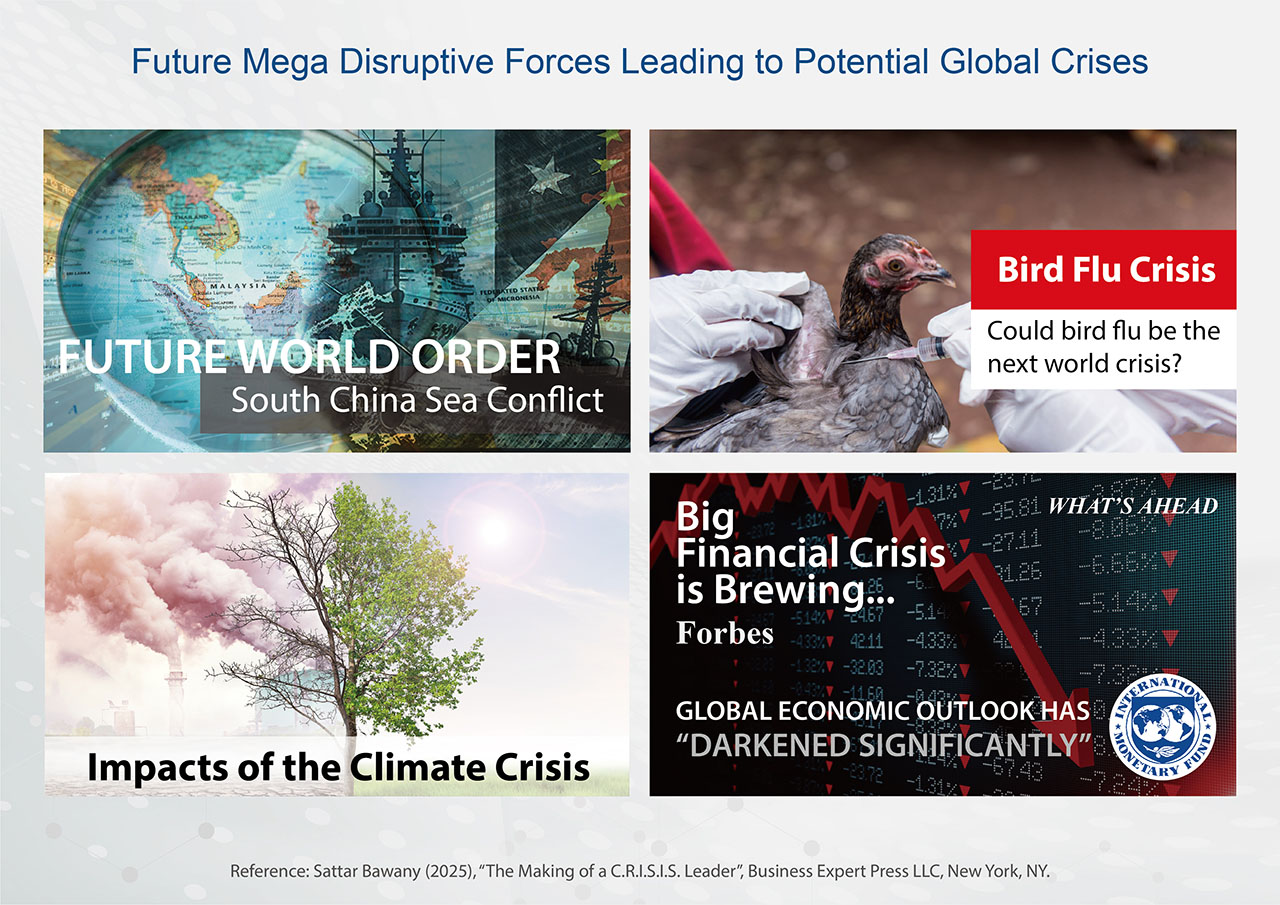In recent years, the world has witnessed a plethora of fundamental crises and challenges, including, but not limited to, the COVID-19 pandemic, transformative megatrends including disruptive technological innovations such as gen AI, Russia’s war of aggression against Ukraine, which has undermined core principles of international law, and the genocidal campaign by Israel in Gaza; climate change impacts leading to extreme weather events, and a growing economic strain due to rising inflation and interest rates; all of which are contributing to significant humanitarian needs worldwide.
As the world becomes more complex and connected, the threat of a corporate crisis grows. There are instances everywhere: We have experienced firsthand how a pandemic when spread worldwide, caused massive global business disruption and a public health disaster; a corruption scandal causes a corporate leader to step down; the sudden death of a CEO without succession planning in place causes instability; a data breach shakes customer confidence; and quality issues trigger a widespread product recall. These are just a few examples among many of the recent corporate crises.
These crises and challenges can be characterized as both “permacrisis” (a prolonged state of crisis) and “polycrisis” (a confluence of multiple interconnected crises) which are all taking place within the context of global instability, fragmentation, and polarisation, with war as a means of politics returning and ‘my country first’ becoming a strong political feature in many parts of the world, despite the need to tackle the common global challenges we face (Bawany 2025).
“Permacrisis” is a term that perfectly embodies the dizzying sense of lurching from one unprecedented event to another as we wonder bleakly what new horrors might be around the corner. When present and future risks interact with each other, the result is the formation of a “Polycrisis” which can be viewed as a cluster of related global risks with compounding effects such that the overall impact exceeds the sum of each part.
In the face of these unprecedented challenges, effective leadership plays a critical role in navigating complex and challenging environments as these situations demand a nuanced and adaptable approach to leadership that emphasizes resilience, strategic thinking, and collaborative problem-solving which forms part of the Paragon7 “cognitive readiness” suite of competencies.
A crisis can be defined as a time of intense difficulty, trouble, or danger. It can be caused by a range of factors, from natural disasters to financial downturns, and can impact individuals, organizations, and even entire countries. The COVID-19 pandemic is a prime example of a crisis that has affected the world on an unprecedented scale (Bawany 2025).
Today’s businesses face unprecedented challenges operating in a VUCAD (volatile, uncertain, complex, ambiguous, and disruptive) global environment that demands a more cohesive support structure for leaders who may be faced with crises of increasing magnitude and frequency and, in some instances, multiple crisis events simultaneously.
The right leadership is critical for organizations to successfully resolve insurmountable challenges in any crisis event. The book aims to help leaders at all levels to learn, unlearn and relearn effective crisis leadership.
Among the key ideas presented in the book include:
- Leadership lessons from past decades on how leaders respond successfully to crises.
- The future mega-disruptive forces will lead to crises that may potentially impact organizations’ supply chains and business sustainability plans.
- The best practice “C.R.I.S.I.S.” Leadership Model outlines the critical skills and competencies that leaders demonstrate effectively during times of crisis.
- Navigating successfully the challenges posed by crises by adopting best practice frameworks, tools, and models such as the 5-Step Crisis Management Planning & Strategy, Paragon7 Cognitive Readiness Suite of Competencies, The Results-Based Leadership (RBL) Framework and A.D.A.M.™ Coaching Methodology.
- The Board’s Role in Navigating through Organizational Crises.














